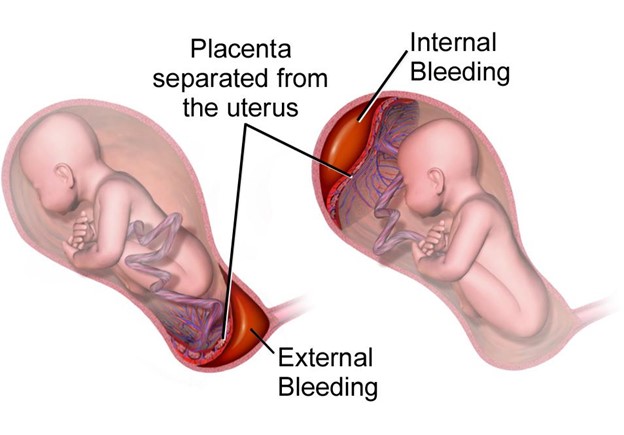A nurse is providing teaching to a client who is at 32 weeks of gestation and is experiencing stress incontinence. Which of the following information should the nurse include in the teaching? (Select all that apply.)
Decrease dietary fiber.
Practice Kegel exercises.
Restrict daily fluid intake.
Reduce caffeine intake.
Avoid daily exercise.
Correct Answer : B,D
Choice A rationale:
This would be incorrect advice. Increasing dietary fiber is commonly recommended during pregnancy to prevent constipation, but it does not address stress incontinence.
Choice B rationale:
This is a correct choice. Kegel exercises are beneficial during pregnancy to strengthen the pelvic floor muscles, which can help manage stress incontinence.
Choice C rationale:
This would be incorrect advice. Restricting daily fluid intake during pregnancy is generally not recommended as it can lead to dehydration and is unlikely to improve stress incontinence.
Choice D rationale:
This is another correct choice. Caffeine is a bladder irritant and can worsen stress incontinence, so reducing caffeine intake can be helpful.
Choice E rationale:
This would be incorrect advice. Regular exercise during pregnancy is generally encouraged unless there are specific medical reasons to avoid it. Avoiding daily exercise is not the appropriate approach to manage stress incontinence.
Nursing Test Bank
Naxlex Comprehensive Predictor Exams
Related Questions
Correct Answer is A
Explanation
Choice A rationale:
Hormonal changes play a significant role in postpartum depression. After childbirth, there is a rapid decline in estrogen and progesterone levels, which can lead to mood fluctuations and depressive symptoms. Understanding this hormonal aspect is crucial for the nurse to address postpartum depression risk factors.
Choice B rationale:
Increased social support systems would be considered a protective factor against postpartum depression rather than a risk factor. Having strong social support can help mitigate the risk of developing postpartum depression.
Choice C rationale:
High self-esteem is not typically a risk factor for postpartum depression. In fact, individuals with higher self-esteem may be more resilient in coping with the challenges of postpartum period.
Choice D rationale:
Being a mother of two other children is not inherently a risk factor for postpartum depression. While having multiple children can be demanding, it does not directly increase the risk of developing postpartum depression. The hormonal changes and individual circumstances play more significant roles.
Correct Answer is A
Explanation
Choice A rationale:

Continuous abdominal pain and vaginal bleeding in a client with a history of cocaine use are indicative of abruptio placentae. Abruptio placentae is a medical emergency where the placenta detaches from the uterine wall before delivery, leading to severe bleeding and abdominal pain. Immediate medical intervention is necessary to prevent complications for both the mother and the baby.
Choice B rationale:
Hydatidiform mole is a gestational trophoblastic disease that occurs due to an abnormal pregnancy. It is not associated with continuous abdominal pain and vaginal bleeding. Instead, clients with this condition often present with vaginal bleeding and a grape-like cluster of cysts in the uterus.
Choice C rationale:
Preterm labor involves regular uterine contractions and cervical changes before 37 weeks of gestation. While preterm labor can cause abdominal discomfort, it is not usually described as continuous abdominal pain. Vaginal bleeding is not a typical symptom of preterm labor.
Choice D rationale:
Placenta previa is a condition where the placenta covers the opening of the cervix. It can cause painless vaginal bleeding, but it is not usually associated with continuous abdominal pain. Clients with placenta previa often experience sudden, painless bleeding later in pregnancy.
Whether you are a student looking to ace your exams or a practicing nurse seeking to enhance your expertise , our nursing education contents will empower you with the confidence and competence to make a difference in the lives of patients and become a respected leader in the healthcare field.
Visit Naxlex, invest in your future and unlock endless possibilities with our unparalleled nursing education contents today
Report Wrong Answer on the Current Question
Do you disagree with the answer? If yes, what is your expected answer? Explain.
Kindly be descriptive with the issue you are facing.
